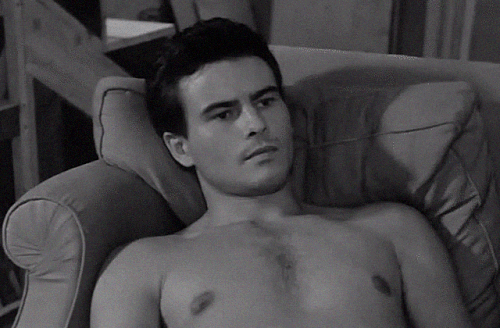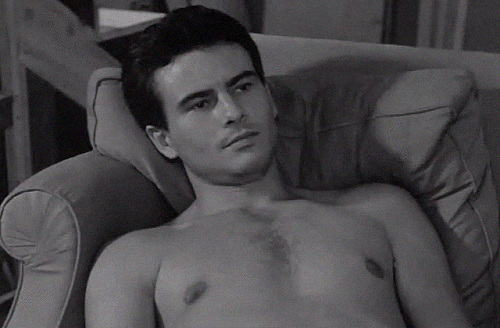#horst buchholz edit
Text
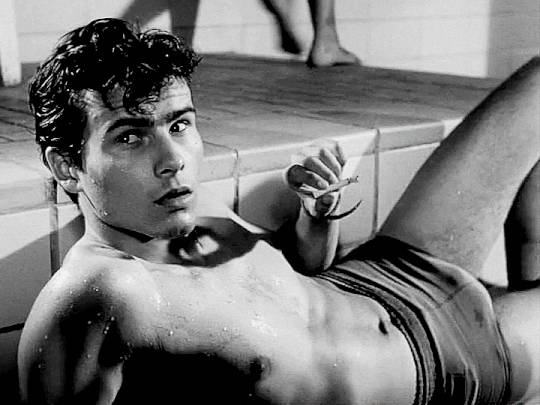

#male beauty#Horst Buchholz#Die Halbstarken#Teenage Wolfpack#horst buchholz edit#die halbstarken edit#teenage wolfpack edit#actor#film#classicfilmedit#film edit#black and white#celebrity#european#1950s#gif#retro
179 notes
·
View notes
Text

Horst Buchholz in One, Two, Three (1961)
#Horst Buchholz#One Two Three#horst buchholz edit#one two three edit#male beauty#actor#film#celebrity#colorized#my edit#photoshoot#european#vintage#1960s#horstnuchholzedit#onetwothreeedit#classicfilmedit
17 notes
·
View notes
Text

Peter O'Toole in Lawrence of Arabia (David Lean, 1962)
Cast: Peter O'Toole, Alec Guinness, Anthony Quinn, Jack Hawkins, Omar Sharif, José Ferrer, Anthony Quayle, Claude Rains, Arthur Kennedy, Donald Wolfit, I.S. Johar, Gamil Ratib, Michel Ray, John Dimech, Zia Mohyeddin. Screenplay: Robert Bolt, Michael Wilson, based on the writings of T.E. Lawrence. Cinematography: Freddie Young. Production design: John Box. Film editing: Anne V. Coates. Music: Maurice Jarre.
It's often said that David Lean's Lawrence of Arabia is one of those films that must be seen in a theater. That statement gets my back up: If a movie's story and performances are secondary to its spectacle, is it really a good movie? As it happens, I first saw Lawrence in a theater in the year of its release (or at least its European release, which was 1963), but it was a theater in Germany and the film was dubbed in German. Only moderately fluent in spoken German, I don't think I followed the dialogue very well, though I certainly appreciated the spectacle, especially Freddie Young's Oscar-winning cinematography. It took some later viewings on TV in the States for me to grasp the movie's story, though the film was trimmed for time, interrupted by commercials, and subjected to atrocious panning-and-scanning because viewers objected to letterboxing of wide-screen movies. So this viewing was probably my first complete exposure to Lean's celebrated film. And though I watched it at home -- in HD on a 32-inch flat screen TV -- I think I fully appreciated both the spectacle and the story. Which is not to say that I think the movie is all it's celebrated for being. The first half of the film is far more compelling than the latter half, and some of the casting is unforgivable, particularly Alec Guinness as Prince Faisal and Anthony Quinn as Auda. Guinness was usually a subtle actor, but his Faisal is mannered and unconvincing. Quinn simply overacts, as he was prone to do with directors who let him, and his prosthetic beak is atrocious. Omar Sharif, on the other hand, is very good as Ali. The producers are said to have wanted Horst Buchholz or Alain Delon, but they settled on Sharif, already a star in Egypt, and made him an international star. His success points up how unfortunate it is that they couldn't have found Middle Eastern actors to play Faisal and Auda. In his film debut, Peter O'Toole gives a tremendous performance, even though he's nothing like the shorter and more nondescript figure that was the real T.E. Lawrence, and it's sad that screenwriters Robert Bolt and Michael Wilson couldn't have found room in the script to trace the origins of Lawrence's obsession with Arabia. For that omission, a good read is Scott Anderson's Lawrence in Arabia: Deceit, Imperial Folly and the Making of the Modern Middle East, which not only depicts Lawrence's complexity but also the madness of the spy-haunted, oil-hungry wartime world in which he played his part. It's beyond the scope of even a three-and-a-half-hour movie to tell, though it could make a tremendous TV miniseries some day.
4 notes
·
View notes
Photo
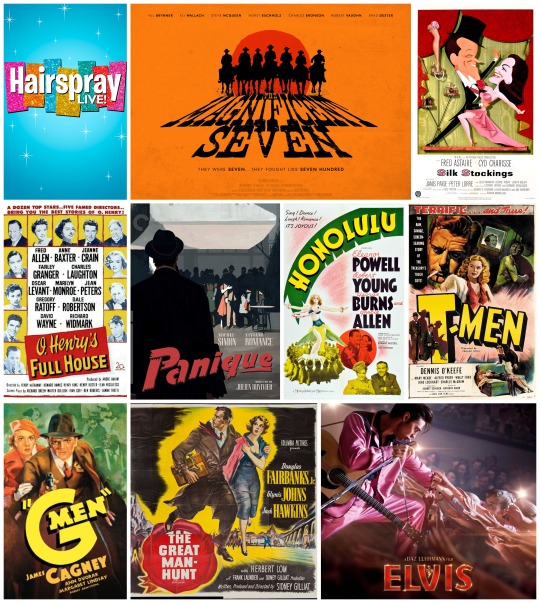
highlights of March
1. Favourite movies: it's the first time I'm not impressed with any film I've seen.... Most of them are just good or solid, but I'm sure I won't rewatch any of these. The closest one to this category is The Magnificent Seven (1960), a great film, just not a favourite of mine, just a clear standout among the rest.
2. Decent movies I liked / appreciated but not loved: I'm going to skip this one, otherwise I'll leave the rest of the films here.
3. wtf movie/ending: some moments of Elvis (2022). Tom Hanks in general, the editing, the music. Some of it is truly baffling.
4. Best scenes: the dance on the deck (Honolulu, 1939); dancing while changing clothes (Silk Stockings, 1957), taking the hearse to bury a guy / Britt's introduction / the final shootout (The Magnificent Seven, 1960).
5. Favourite genres: crime, drama, western.
6. Favourite directors: John Sturges (The Magnificent Seven, 1960).
7. Favourite actors: Michel Simon (Panique, 1946); Dennis O'Keefe (T-Men (1947), Austin Butler (Elvis, 2022); James Cagney ('G' Men, 1935); Cyd Charisse (Silk Stockings, 1957); Yul Brynner, Steve McQueen, Charles Bronson, James Coburn (The Magnificent Seven, 1960).
8. Least favourite performances: Fred Astaire (Silk Stockings, 1957). It's just awkward and... boring. Same, same, same... And Tom Hanks in Elvis (2022). That was just unbearable.
9. The most wasted cast: no one really.
10. The best wasted premise: O. Henry's Full House (1952). I like the idea of an anthology and I mostly like the films that use it, but this one is deeply boring.
11. Best premise: none of them? Again. But if I have to choose, then Panique (1946).
12. Favourite cast: The Magnificent Seven (1960). Yul Brynner, Steve McQueen, Charles Bronson, Robert Vaughn, Brad Dexter, James Coburn, Eli Wallach and even Horst Buchholz.
13. Favourite on-screen duos: Yul Brynner x Steve McQueen (The Magnificent Seven, 1960).
14. Favourite on-screen relationships: none.
15. Favourite characters: Dennis O'Brien, a.k.a. Vannie Harrigan (T-Men (1947); Chris, Vin, Bernardo, Britt (The Magnificent Seven, 1960).
15. Favourite quote: I have been offered a lot for my work, but never everything. (The Magnificent Seven, 1960).
16. Favourite fact discovered in 2023: Yul Brynner and Steve McQueen had a feud on the set of The Magnificent Seven (1960). It didn't look like that to me, but then again, the film was supposed to be tense, so it might have helped.
17. The most overrated film: Elvis (2022). It's okay, it just has a lot of issues.
18. The most disappointing film: O. Henry's Full House (1952). I can barely remember anything about it.
19. The biggest surprise: T-Men (1947).
20. Best cinematography: Nicolas Hayer (Panique, 1946).
21. Best set design: Hugh Hunt, Edwin B. Willis (Silk Stockings, 1957).
22. Best costume design: Helen Rose (Silk Stockings, 1957).
23. Best music: Silk Stockings (1957).
24. Best prooduction choice: raising the stakes in T-Men (1947).
25. Worst production choice: the romance subplot in The Magnificent Seven (1960). I wish they'd either get rid of it or write it differently, with a bit more care.
26. Film of the month: The Magnificent Seven (1960).
3 notes
·
View notes
Note
Dobrý den again, I have another little question for ptak o. At 6:49 Skeleton shouts something to the dog, it sounds like "van". (yt, remastered version) Couldnt find such word in Czech. In German dub it is translated as "verschwinde" (go away). Whats the original word? I have now seen the film several times because of the excellent play of Karel Roden, and it seems to me the film is not as bad as I first thought. The Czech actors play well. The German men play wooden, T. Ruland (princess) is ok.

Hi again! :) (btw sorry for long answers! I can never stop myself when I start to ramble about fairytale films!)
To your first question: I can’t understand what Skeleton says either, lol! At first I thought he says “Ven!”, meaning “Out!” which would sort of make sense in the context. But no matter how many times I rewatch the scene, it sounds more as if he just does a weird roar at the dog – ”vrrr” is a sound of dog growl in Czech.
Oh yes, Karel Roden is great and seeing him in a fairytale role is a rare treat. He is extremely picky about his roles, especially in recent years, and often stars in international projects.
International fans might know him as a villain in Bulletproof Monk and Rasputin in the first Hellboy movie. Not to mention his roles in Lamberto Bava’s Dragon Ring, second Fantaghirò and Sorellina e il principe del sogno.

Karel Roden as villainous Skeleton in The Firebird (1997)
I think that all the actors did the best they could with the material they were given. From the Czech actors: I can tell you that everyone basically plays their standard roles, in which they are good at; I wouldn’t say that they had to try too hard to be believable (e.g. Langmajer plays the sleazy prince, cause he usually plays sleazy roles, even to this day; Roden plays a charismatic villain, as he always does etc.). Kudos to Marián Labuda Sr. who plays Skeleton’s henchman, he was one of the best Slovakian actors in history and yet he took such a thankless little role and managed to nail it! (I imagine he enjoyed it too cause he didn’t often get to play villainous roles on screen :)
Ondřej Brousek, who plays the hero’s brother (why, oh why did they add his character and then killed him off?), is nowdays more of a composer/musician than an actor. He composed music scores for e.g. fairytales School of Princes (”Škola princů”, 2010) or The Treasure (”O pokladech, 2012) among many others.
For me, it’s interesting to see Barbora Leichnerová (Elena’s maid Margita), as it was her last role on screen and I don’t think that she is still acting to this day. She is a lesser known Czech actress, but I remember her well cause she starred in several made-for-TV fairytale films in the 80′s.
Edit: I feel bad for not mentioning the presence of the legendary Horst Buchholz in my original comment! He was a great actor and I wish that he had more screentime as the King in this movie!
I’ve always liked Tina Ruland in both The Magic Pouch and in The Firebird. I think she was pretty and charming in both roles (more in The Magic Pouch since she had more screentime and personality there). And a big shout out to Dana Černá, one of my favorite voice actresses, who provided her Czech voice! (the Prince is voiced by another of my favorite voice actors: Zdeněk Hruška, who also provided his voice to Max Urlacher in The Queen of the Lake btw)
I think that one of the many issues this movie has, one of the biggest ones is how underused the Prince and the Princess are as a couple. (btw I had no idea they became a pair while filming this, thank you for the info!)
Their meeting is pretty cute, love at first sight sort of works (*I know you, I walked with you once upon a dream* theme is probably copied from Sleeping Beauty 1959, but I am ok with it). Their chemistry seems alright to me. But then...they never really talk again and all their interactions become forced and wooden. They could have been an adventuring, villain-killing power couple but Elena is then pretty much reduced to a constant damsel-in-distress and the Prince always seems to need the help of other people/magic items to suceed in his tasks...
Like you said, this movie had a lot of good things coming for it. Personally, I think it’s a real shame that the screeplay and execution ended up being so completely superficial and without spark.
This is just my personal opinion, but I think that they should have given the job to someone else than director Vorlíček. Someone younger, with new, creative, original ideas, who would turn the source material into a fun fairytale adventure film....
Vorlíček was about 66 years old at that time and pretty much drained as a creator. I know I sound harsh, I really respect and love his works from 60–70′s, but after that, the quality of his projects started to decline and (judging from interviews he did in his later years), he often seemed to put the blame on anyone but himself and refused to admit that his latest films are trash (I’ve seen his sequel to Girl on the Broomstick and it must be one of the worst movies ever made)....
2 notes
·
View notes
Text
“Fragilità e Distacco / 70 Years Ruggero Maggi”
COMUNICATO STAMPA
SPAZIO OPHEN VIRTUAL ART GALLERY
“Fragilità e Distacco / 70 Years Ruggero Maggi”
a cura di Sandro Bongiani
Dal 29 agosto al 28 novembre 2020
Inaugurazione: sabato 29 agosto 2020, ore 18.00
S’inaugura sabato 29 agosto 2020, alle ore 18.00, la mostra collettiva internazionale a cura di Sandro Bongiani dal titolo: “Fragilità e Distacco / 70 Years Ruggero Maggi” che lo Spazio Ophen Virtual Art Gallery di Salerno dedica all’artista italiano Ruggero Maggi, uno dei più interessanti artisti contemporanei nati negli anni cinquanta. Una importante mostra collettiva internazionale in concomitanza anche della speciale ricorrenza del suo settantesimo compleanno, presentando 289 opere di 295 artisti presenti su un totale corpus grafico di ben 388 opere arrivate da ogni parte del mondo.
Ruggero Maggi inizia la sua attività di artista negli anni '70 con lavori incentrati sulla poesia visiva, sulla mail art, copy-art, laser art e olografia caratterizzati anche dall’inserimento di “estratti” di vita reale. Con il passare degli anni queste strutture “interferenti” all’interno dell’opera sono diventate sempre più evidenti, in un rapporto di intensa “osmosi”, in cui a partire dal 1989 gli arcaici elementi naturali convivono con componenti tecnologici, fino alle opere recenti dove il concetto “Artificiale /Naturale” tra ”sincronismo concettuale e emozionale” assume un ruolo predominante consegnandoci una realtà in cui l’azione umana coincide con quella morale, in un complesso intrico di rimandi e di sollecitazioni. Sandro Bongiani nella presentazione a questa rassegna scrive: “un continuo interesse verso la natura e la dimensione umana in un complesso rimando di sollecitazioni e interferenze, di sottintesi e nascosti richiami in cui l'azione coincide sinteticamente con il tempo provvisorio e oscuro dell’uomo. In questa particolare condizione, la sua ricerca marginale di confine “più vera di natura” ha saputo prendere corpo e manifestarsi in una sintesi poetica accorta che condivide le urgenze estreme della vita ed i contrasti inquieti della nostra malandata società contemporanea”.
Artisti presenti:
Christian Alle Dino Aloi Antonio Amato Lutz Anders Leslie Atkins Paola Baldassini Franco Ballabeni Calogero Barba Fabiola Barna Donatella Baruzzi Pier Roberto Bassi Umberto Basso Keith Bates Elisa Battistella Lutz Beeke Giacomo Beffa Lancillotto Bellini Milena Bellomo C. Mehrl Bennett John M. Bennett Luisa Bergamini Mariarosa Bergamini Pedro Bericat Carla Bertola Diane Bertrand Rita Bertrecchi Massimo Biagi Gabriele Bianconi Lucia Biral Manuel Xio Blanco Antonio Bobò Rovena Bocci Norbert Bockmann Kika Bohr Giovanni Bonanno Adriano Bonari Anna Boschi Rosa Bosco Maria Cecilia Bossi Marzia Braglia Hans Braumüller Rossana Bucci Joachim Buchholz Anna Maria Buonapace Viviana Buttarelli Fulgor C. Silvi Mirta Caccaro Alfonso Caccavale Glauco Lendaro Camiless Loretta Cappanera Guido Capuano Lamberto Caravita Cascadia Artpost Bruno Cassaglia Antonia Mayol Castello Gianpiero Castiglioni Renato Cerisola Bruno Chiarlone Simonetta Chierici Silvia Cibaldi Cosmo Cinisomo Circulaire132 Maria Antonietta Claretto Anna Maria Cognigni Ryosuke Cohen Mabi Col Francesco Cornello Enzo Correnti Carmela Corsitto Crackerjack Kid Maria Credidio Anna Maria Crescenzi Laura Cristin Carla Crosio Rosa Cuccurullo Crescenzio D'Ambrosio Nicolò D’Alessandro Diana Danelli Marc De Hay Ko De Jonge Mario De Leo Antonio De Marchi Teo De Palma Adolfina De Stefani Albina Dealessi Michel Della Vedova Antonio Di Michele Debora Di Bella Elena Di Felice Maura Di Giulio Fabio Di Ojuara Franco Di Pede Marcello Diotallevi Giovanna Donnarumma Mike Dyar Eart Art Mimmo Emanuele Rita Esposito Ever Arts Cinzia Farina Fernanda Fedi Gretel Fehr Domenico Ferrara Foria Ivana Ferraro Luc Fierens Giuseppe Filardi Anna Finetti Alessandra Finzi Aaron Flores Maurizio Follin Roberto Formigoni Kiki Franceschi Nicola Frangione Piet Franzen SIDAC Giglio Frigerio Ivo Galassi Daniele Galdiero Rosalie Gancie Antonella Gandini Attilia Garlaschi Claudio Gavina Ombretta Gazzola Roberta Ghisla Roberto Gianinetti Mario Giavino Ed Giecek Gino Gini Guglielmo Girolimini Lino Giussani Coco Gordon Bruno Gorgone Daniela Gorla Claudio Grandinetti Elke Grundmann Paolo Gubinelli Giovanni Gurioli _Guroga Karl Friedrich Hacher Hanrahan Peter Hide 311065 Uwe Hofig Slanye Huang Carlo Iacomucci Ibirico Gennaro Ippolito Robert James Benedetta Jandolo Janus Edition Isabel Jover Magda Lagerwerf Felipe Lamadrid Giusi Lazzari Ettore Le Donne Nadine Lenain Pascal Lenoir Alfonso Lentini Marialisa Leone Giovanni Leto Pino Lia Pierpaolo Limongelli Pietro Lista Oronzo Liuzzi Serse Luigetti Ruggero Maggi Olga Maggiora Nadia Magnabosco Mailarta MailArtMartha Loredana Manciati Antonio Mancini Antonello Mantovani Angela Marchionni Renzo Margonari Patrizio Maria Dorian Ribes Marinho Laura Marmai Max Marra Calogero Marrali Maria Grazia Martina Maribel Martinez Gianni Ettore Andrea Marussi Anna Maria Matone Anja Mattila Michelangelo Mayo Monica Mazzone Pierluigi Meda Massimo Medola Myriam M. Mercader Miche Art Universalis Monica Michelotti Virginia Milici Gabi Minedi Antoni Mirò Annalisa Mitrano Henning Mittendorf Mauro Molinari Domingo Sanz Montero Maya Lopez Muro Museuvofmailart Keiichi Nakamura Giuliana Natali Katerina Nikoltsou Aldo Nodari Pierangela Orecchia Clemente Padin Lucia Paese Franco Panella Katia Paoletti Linda Paoli Paola Pareschi Sjoerd Paridaen Enzo Patti Giuseppe Pellegrino Remy Penard Walter Pennacchi Mariella Perani Marisa Pezzoli Riccardo Pezzoli Tarcisio Pingitore Horvath Piroska Valentina Poli Veronique Pozzi Painè Nadia Presotto Daniele Principe Tiziana Priori Gina Pritti Giancarlo Pucci Fabrizio Randini Cesar Reglero Gaetano Ricci Angelo Ricciardi Isabella Rigamonti Carla Rigato Ina Ripari Costantino Rizzuti Ilaria Rizzuti Jaume Rocamora Gian Paolo Roffi Claudio Romeo Piero Ronzat Giovanni Ronzoni Lorenzo Rosselli Manuel Ruiz Ruiz Marialuisa Sabato Hikmet Sahin Piero Sani Sergio Sansevrino Antonella Sassanelli Antonio Sassu Anna Maria Saviano Roberto Scala Duccio Scheggi Peter Schubert Lars Schumacher Jörg Seifert Cesare Serafino Lucio Serafino Tiziano Serafino Domenico Severino Noriko Shimizu Maria Josè Silva – Mizè Pietro Silvestro Cecilia Solamito Luigino Solamito Alberto Sordi Cristina Sosio Lucia Spagnuolo Celina Spelta Ciro Stajano Honoria Starbuck Giovanni e Renata Strada Rod SummersVec Elisa Taiola Franco Tajariol Nello Teodori Ernesto Terlizzi Gian Paolo Terrone Elsa Testori Roberto Testori Thierry Tillier Paola Toffolon Renata Torazzo Micaela Tornaghi Horst Tress Alan Turner Stefano Turrini Mikel Untzlla Sigismund Urban Valdor Generoso Vella Silvia Venuti Ada Vera Verbena Daniele Virgilio Alberto Vitacchio Antonio Zenadocchio Rolando Zucchini.
RUGGERO MAGGI / Biografia
Dal 1973 si occupa di poesia visiva e libri d'artista (Archivio Non Solo Libri); dal 1975 di copy art e arte postale (Archivio Amazon); dal 1976 di laser art, dal 1979 di olografia, dal 1980 di X-ray art e dal 1985 di arte caotica sia come artista - con opere ed installazioni incentrate sullo studio del caos, dell’entropia e dei sistemi frattali - sia come curatore di eventi: “Caos italiano” 1998; “Caos – Caotica Arte Ordinata Scienza” 1999 – 2000; “Isole frattali” 2003, “CaoTiCa” 2004, “Attrazione frattale” 2006, “Caos e Complessità” 2009, “Caos, l’anima del caso” 2010, “Caotica.2014” Lodi e Jesi.
Tra le installazioni olografiche: “Una foresta di pietre” (Media Art Festival - Osnabrück 1988) e “Un semplice punto esclamativo” (Mostra internazionale d’Arte Olografica alla Rocca Paolina di Perugia – 1992); tra le installazioni di laser art: “Morte caotica” e “Una lunga linea silenziosa” (1993), “Il grande libro della vita” e “Il peccatore casuale” (1994), “La nascita delle idee” (1993) esposta nel 1995 al Museo d’Arte di San Paolo (BR).
Suoi lavori sono esposti al Museo di Storia Cinese di Pechino ed alla GAM di Gallarate. Ha inoltre partecipato alla 49./52./54. Biennale di Venezia ed alla 16. Biennale d’arte contemporanea di San Paolo nel 1980.
2006 realizza “Underwood” installazione site-specific per la Galleria d’Arte Moderna di Gallarate.
2007 presenta come curatore il progetto dedicato a Pierre Restany “Camera 312 – promemoria per Pierre” alla 52. Biennale di Venezia.
2008 presenta come curatore il progetto “Profondità 45 – Michelangelo al lavoro” sul rapporto Arte -Tecnologia. Nel 2008 a Villa Glisenti (BS) ed all’Art Centre della Silpakorn University di Bangkok, per un simposio artistico italo-thailandese dedicato alle problematiche del riscaldamento globale, realizza l’installazione “Ecce ovo”.
2009 cura l’installazione site-specific collettiva “Prima o poi ogni muro cade” all’interno di PLAZA: OLTRE IL LIMITE 1989-2009 XX Anniversario della caduta del Muro di Berlino in Galleria del Corso a Milano; evento successivamente presentato a Villa Pomini a Castellanza (VA) e Spazio Luparia a Stresa.
2010 “GenerAction – un promemoria per le generazioni” progetto di Mail Post.it Art presso la Galleria di Arti Visive dell’Università del Melo - Gallarate.
2011/2013/2015/2017 presenta a Venezia con il Patrocinio del Comune di Venezia Padiglione Tibet, progetto presentato successivamente alla Biennale di Venezia, al Museo Diotti di Casalmaggiore (CR), palazzo Ducale di Genova e presso la Biblioteca Laudense di Lodi.
2014 PadiglioneTibet partecipa alla Bienal del Fin del Mundo in Argentina.
2016 “TERRA/materiaprima” progetto di Mail Art presso la Galleria di Arti Visive dell’Università del Melo – Gallarate.
2016 presenta Padiglione Tibet al Castello Visconteo di Pavia.
2017 presenta la 1 Biennale Internazionale di Mail Art a Venezia – Palazzo Zenobio
2018 Padiglione Tibet partecipa alla Vogalonga (Venezia)
2018 installazione “Erosioni in pinzimonio” - Poetry and Pottery Un’inedita avventura fra ceramica e poesia visiva - CAMeC centro arte moderna e contemporanea La Spezia
2018 installazione CaraPace - Museo Tecnico Navale - La Spezia
2019 “Onda Sonora” libro collettivo – V Biennale del Libro d'artista - Napoli
2019 ARTNIGHT Venezia – Padiglione Tibet - videoproiezione 2011.2019. Storia di un padiglione per un paese che non c'è - Magazzini del Sale, Reale Società Canottieri Bucintoro
2019 riceve il Premio alla carriera - PREMIO ARTE IN ARTI E MESTIERI 2019 – XIX EDIZIONE - Fondazione Scuola Arti e Mestieri "F. Bertazzoni" - Suzzara (MN)
2020 “#GlobalViralEmergency / Fate Presto” L’arte tra scienza, natura e tecnologia - Spazio Ophen Virtual Art Gallery – Salerno
“Fragilità e Distacco / 70 Years Ruggero Maggi”
SPAZIO OPHEN VIRTUAL ART GALLERY
Via S. Calenda, 105/D - Salerno, Tel/3937380225
e-mail: [email protected]
Gallery: http://www.collezionebongianiartmuseum.it
Orario continuato tutti i giorni dalle 00.00 alle 24.00
0 notes
Text

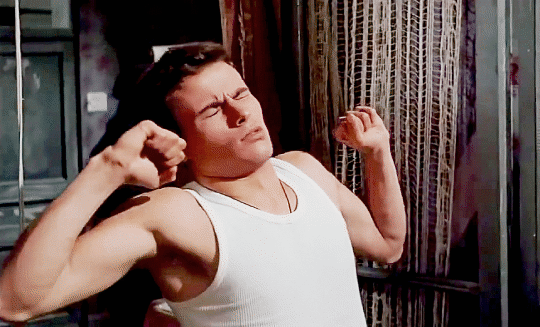
#male beauty#Horst Buchholz#Monpti#horst buchholz edit#monpti edit#actor#film#celebrity#european#classicfilmedit#retro#1950s#gif
32 notes
·
View notes
Text
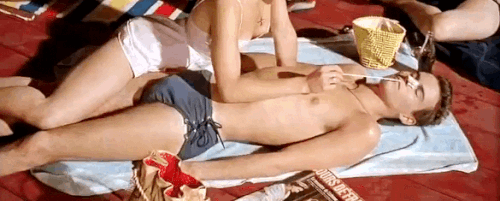
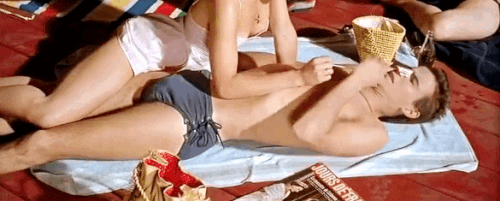
#male beauty#Horst Buchholz#Monpti#horst buchholz edit#monpti edit#actor#film#celebrity#european#retro#classicfilmedit#1950s#gif
19 notes
·
View notes
Text
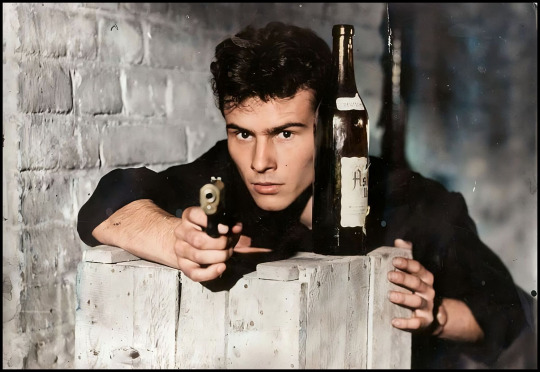
Horst Buchholz in Teenage Wolfpack (Die Halbstarken) (1956)
#Horst Buchholz#Teenage Wolfpack#Die Halbstarken#horst buchholz edit#teenage wolfpack edit#die halbstarken edit#actor#film#celebrity#european#1950s#vintage#photoshoot#colorized#horstbuchholzedit#teenagewolfpackedit#diehalbstarkenedit#my edit#classicfilmedit#one perfect shot#oneperfectshot
6 notes
·
View notes
